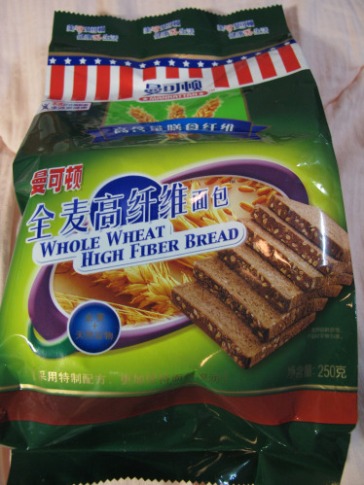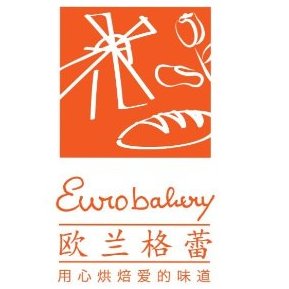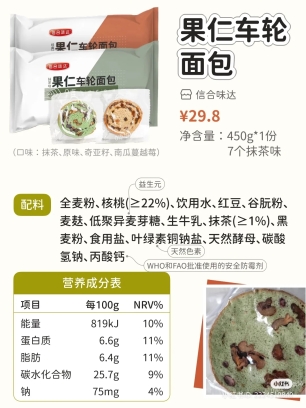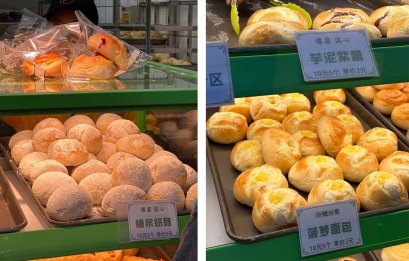Few people know that China has already been the world’s largest potato production and consumption country since 1978.
The humble potato, a staple of many a European nation, used to have only a supporting role in Chinese cuisine, even though it has been grown in China for about 400 years. Known as tudou (literally: ‘earth bean’) in colloquial Chinese, or malingshu (‘horse bell tuber’) in more formal texts, the potato traces its history in China to the Ming dynasty, and was popularised by French missionaries in the eighteenth and nineteenth century.
As the name indicates, potatoes used to be seen as a vegetable in Chinese cooking. In home style cooking, in particular in Northwest China, where the potato is an indigenous crop, chunks of potato are added to stews, particularly with beef.
Chefs have created some deep fried delicacies, including tasty little patties and a finely shredded version of the French fry, which is sheer indulgence. Most common in the home and (home style food) restaurants, is the “tudousi“. This dish might come with strips of pork, slices chili, and pickled vegetables.
Some cooks are even combining the foreign potato with very traditional Chinese flavours like the famous yuxiang (fish flavour) spice mix, creating dishes like yuxiang potatoes, shown in the picture below.
The ultimate dish in this series should be: Sweet and Sour Potatoes, a potato variation on the most typical of Chinese dishes in overseas Chinese restaurants: Sweet and Sour Pork.
However, potatoes have started to challenge the great staples: millet, wheat and rice in China in recent years. The arrival of Western style restaurants and in particular fast food chains, have introduced potato dishes to virtually all urban Chinese. The countryside can be expected to follow soon.
Potato growing
Marketing year 2019/20 fresh potato production is forecast at 98 mln mt, a 5% increase from the estimated 93 mln mt produced in 2018/19. The top regions, Inner Mongolia, Gansu, Yunnan, Sichuan and Guizhou, are good for 45% of the national volume.
The following table shows the regional output of potatoes in 2015.
| Region | Volume (mt) |
| Gansu | 2,146,000 |
| Inner Mongolia | 1,883,000 |
| Sichuan | 1,612,000 |
| Guizhou | 1,503,000 |
| Yunnan | 1,444,000 |
| Chongqing | 1,017,000 |
| Heilongjiang | 565,000 |
| Shaanxi | 561,000 |
| Ningxia | 423,000 |
| Hubei | 415,000 |
| Liaoning | 383,000 |
| Shanxi | 362,000 |
| Qinghai | 362,000 |
| Hebei | 348,000 |
| Hunan | 285,000 |
| Jilin | 237,000 |
| Fujian | 231,000 |
| Zhejiang | 163,000 |
| Guangdong | 162,000 |
| Anhui | 49,000 |
| Tibet | 5,000 |
The Chinese authorities have officially divided China in three potato growing zones in 2019.
| Zone 1 | North China |
| Zone 2 | Central China |
| Winter Zone | South China |
Zone 2 is the designated zone for growing staple potatoes. However, Zone 1 is the oldest potato region of the nation. The China Daily site offers an interesting insight in the history.
Potatoes are getting so important in China that the Zhengzhou Commodity Exchange (ZCE), one of China’s two agricultural commodities exchanges, intends to introduce potato trade. ZCE is reporting problems with obtaining the necessary permits from the China Securities Regulatory Commission and other relevant central authorities, that are said to need time to “consider more about the development of the market”.
The ZCE has been mulling over the launch of the product for quite a long time. The exchange disclosed its plan to introduce potato futures trading in early 2012, saying the contract was set to be launched by the end of that year. Later that year, the agricultural authorities of Gansu province said all preparations for potato futures had been completed.
Potato growing as poverty relief
Guizhou and Gansu province are expanding the amount of land they have planted in potatoes in accordance with a Ministry of Agriculture plan which calls for around 6.7 mln hectares of them by 2020. One out of 100 towns or villages in under-developed Guizhou province is Lutang, which now has much of its land for potato growing. The head of the village, Zhang Wei, says they have 1.15 mln kgs of top quality potatoes that they plan to distribute to farmers for free to use on 200 hectares of land. Local authorities say that as many as 60 percent of the households in the area living with poverty see the potato planting as a good method to help them generate income and two special cooperatives have been set up to keep prices stable and to ensure income. The planting area is expected to reach just over 660 hectares by 2018.
China to import seed potatoes from the UK
A potato deal signed in 2018 is expected to bring major benefits to Scotland, with around 70% of the 100,000 mt of seed potatoes exported annually from the UK coming from Scottish farms. Seed potatoes are varieties intended for replanting to produce new plants and tubers. They are grown in special conditions to lower the risk of disease. Scotland’s potato crop is recognized within the European Union for its high health status. The potato is now China’s fourth staple crop after rice, corn and wheat and demand for fresh potatoes is increasing at an annual rate of around 5%. “The rapidly-growing Chinese market offers huge potential for UK farmers,” said UK International Trade Secretary Liam Fox. “According to research by Barclays, around 60% of people in China would actually pay more for a product, just because they knew it was British.”
Frozen French fries
Only 10% of the national output is further processed into various (semi)finished products.
In the last three years, China’s rapidly changing lifestyles and eating habits have resulted in a booming fast-food industry. Chinese consumers, especially those who live in large urban areas, have accepted Western-style fast-food restaurants that serve French fries and other popular side dishes as a way of life in China.
China’s market year 2019/20 frozen French fries (FFF) production is forecast at 310,000 mt, a 10% increase from 2018/19 as a result of this year’s increased fresh potato production (see above). China imports the majority of its FFF from the United States. However, due to the additional tariffs China has levied on many U.S. agricultural products, the U.S. FFF market share fell from 64% to 53% from 2016/17 to 2018/19. As a result, forecasts China’s overall MY2019/20 FFF imports will decrease by 10%, to 129,000 MT. The next largest suppliers, Belgium, Turkey, and the Netherlands, together accounted for 40% of China’s FFF imports in MY2018/19.
Frozen French fries require raw materials compliant with strict requirements, such as shape, starch content, sugar content, and color. Therefore, processors usually contract with farmers to produce potatoes which meet certain quality conditions. After a poultry disease outbreak and other problems in that industry, which affected Kentucky Fried Chicken and McDonald’s, the largest buyers, production of frozen french fries has decreased considerably. Although the scare seems to be over, production is not expected to rise considerably soon.
Foreign investors
Still, a market like this is bound to attract international investors.
- JR Simplot established in 1992 in Beijing’s Fengtai district, is a joint venture between US-based JR Simplot , McDonald’s and Beijing Agricultural, Industrial and Commerce General Company and primarily produces french fries and hash browns for McDonald’s and other East Asian customers. It was fined a record RMB 3.9 million for water pollution in April 2015.
- McCain Foods started construction of a French fry processing facility in Harbin (Heilongjiang) in 2004. The new company, which was registered in the Harbin Economic and Technological Development Zone, was McCain’s first processing facility in Asia. The plant has had to cope with various problems like faulting water supply.
- Aviko has a production facility in Minle (Gansu) since 2008, and in June 2014 signed another project in Zhangjiakou (Hebei), near Beijing. The latter is a partnership with Snow Valley Agriculture. The joint venture was dissolved in December 2018. Aviko acquired a 90% stake in Hongyuan Louis (Inner Mongolia) in Jan. 2020. The deal includes a factory with an annual capacity of 50.000 mt, potato storage, a semi-automatic cold store, boiler house, waste-water treatment and around 170 employees. Hongyuan Agriculture will stay involved as a 10% shareholder and closely cooperate with Aviko on amongst others the sourcing of potato. Hongyuan started exported frozen French fries in 2020.
- Conagra has acquired TaiMei Potato Industry Limited, a potato processor in Shangdu (Inner Mongolia) in July 2014.
- Farm Frites has signed an agreement with Inner Mongolia Linkage Potato Co. Ltd. in September 2014, to set up a joint venture in Chifeng (Inner Mongolia). The Joint venture will build a new french fry factory and target the premium segment of the Chinese french fry market. Inner Mongolia Linkage Farm Frites Co. will be for 75% owned by Linkage, while Farm Frites will own 25%. Production was to start in 2017, but the construction of the plant has been delayed and the project seems to have halted completely in 2019. However, Linkage has picked it up again by its own and the new plant started test production in August 2022.
The above list clearly indicates that while all international players are interested in developing the Chinese market, it has so far not been a smooth ride for any of them.
On the artisan side of the market, a Dutch initiative, Royal Patat, has started selling hand-cut french fries in Shanghai.

Top 3 brands
Instead of looking at volumes, this blog prefers to introduce ‘top brands’ from a popularity perspective. Here are the top 3 french fries chain outlets according to a Chinese consumer site.
Potato starch
China’s market year 2019/20 potato starch production is forecast at 450,000 mt, roughly 10% decrease from 500,000 mt in 2018/19, due to increased consumption in other sectors, leaving fewer fresh potatoes available for starch production. According to industry sources, starch production consumes small, irregularly shaped, or bad quality potatoes. The good weather conditions not only increased yield, but also generated good quality, which reduced potatoes available for potato starch production. Heilongjiang, Ningxia, Gansu, and Inner Mongolia are the primary potato starch producing provinces in China, accounting for over 70 percent of China’s total production.
Top Chinese producers of potato starch are:
| Company | Location |
| Huaou Starch | Inner Mongolia |
| Lantian Potato | Gansu |
| Beidahuang Potato | Heilongjiang |
| Yundian Starch | Yunnan |
| Weston Potato | Qinghai |
Potato starch can be used to make noodles, be it in combination with starches from other sources. Shanghai Suiquan Food Co., Ltd. produces ‘Potato Noodles’ with the following ingredients.
Water, potato starch, corn starch, cassave starch, salt, food additives (sodium dehydro-acetate)
Potato crisps
Industry sources estimate China’s market year 2017/18 sliced potato chip and fabricated potato chip production at 450,000 mt and 350,000 mt, a 7% and 13% year on year increase, respectively. The total turnover of this product group was RMB 29 bln in 2017.
Potato chips have become a popular snack food in China. Most international players are studying their options, and some of them, like Pepsi (Lay’s), have started local production. However, not any potato will do. Each must be precisely the right variety, grown into an ideal shape and size and available on the exact schedule necessary to supply the chip factories in Beijing and Shanghai. Potatoes grown by local farmers don’t always make the cut. Unless they are handled as delicately as eggs, they risk bruising — a common side-effect of China’s manual farming techniques and crude distribution methods. To ensure the yellowish color of its Lay’s chips, Pepsi also requires potatoes to
be low in both sugar and water content. The ideal specimen is about as large and round as a baseball. Even now, Pepsi’s two farms still produce only about 40% of the potatoes Pepsi needs in China.
Other major potato chip brands (manufacturers) in China are: Calbee (Calbee), Lay’s (Pepsi), Oishi (Liwayway) , Shanghai House (House), Carrefour (Jishijia). P&G has negotiated with a potential partner in China for the local production of Pringles.
Local production of crisps by multinationals is a great boost for the local potato growing industry. Lay’s is using potatoes grown in former desert areas in Inner Mongolia.
Top 3 brands
Here are the top 3 potato chips brands according to another Chinese consumer site.
Capico is the only domestic brand in this list. Its producer, Dali Foods (Fujian) got listed on the Hong Kong Stock Exchange in November 2015. Dali is also one of China’s top producers of biscuits.
The following screenshot shows how the major brands seem to imitate Pringles’ packaging, while offering their chips for a significantly lower price.
The latest launch in this product group was from the Hengyou Group (Shantou, Guangdong). This company produces a range of potato crisps under the Bidetu “Peter Rabbit” brand.
The following table shows the top 5 selling potato crisp brands in China in 2019
| Rank | Brand Name | Company | Market Share(%) |
| 1 | Lay’s | Pepsi Group | 37 |
| 2 | Shuyuan | Haoliyou Foods | 27 |
| 3 | Copico | Dali Foods | 19 |
| 4 | Oishi | Oishi | 10 |
| 5 | Pringles | Kellogg’s | 1 |
Lay’s tried to market with its commitment to the Chinese market by launching a range of crisps flavoured after various local cuisines in 2024.
Mashed potato
The Chinese drive for developing novel foods is limitless. Baiguyou (Wuhan) has developed a range of instant mashed potato products under the Painini brand. It is packed in cups that can be filled with boiling water like cups of instant noodles. The product is available in several flavours, including: beef, walnut, curry, chicken, pumpkin, etc.
Potato-based instant noodles
Chinese researchers are developing a recipe and production process for instant noodles in which part of the wheat flour is replaced by potato flakes. This fits the efforts of the Chinese government to make the potato one of the country’s staple foods (see below) and will enhance the nutritional contents of instant noodles, possibly breaking the ‘junk food image’ of instant noodles. The following ingredients list appears in one of their publications.
| Ingredients | ration (%) |
| Wheat flour | 65 |
| Potato flakes | 35 |
| Salt | 2 |
| Water | as needed |
| Gluten | 5 |
| Complex phosphates | 0.3 |
| Sodium alginate | 0.3 |
| Soda | 0.15 |
No such product has yet appeared on the market, but it is interesting to learn about these efforts. Other research institutes in China are working on producing regular noodles and bread replacing part of the wheat flour by whole potato powder.
Exports
The first Chinese potato chips were exported to the US in the course of 2015. However, it was not Capico, but Chak Chak, produced in Fuxin (Liaoning). Chakchak chips stand out by their bright colours, produced using natural anthocyanin. It is interesting to observe that an innovative product like Chak Chak can beat a generic version of the product (Capico) in getting accepted on the global market.

Potato as staple?
A discussion has started in China to improve the status of the potato as staple food. Vice-Minister of Agriculture Xu Xinrong posted a remarkable statement on the ministry’s website on January 9, 2015, entitled ‘strategies for turning potatoes into a staple’. In this concept, potatoes will gradually become China’s fourth largest staple food, after rice, wheat and maize. Xu Shaoshi, minister of the National Development and Reform Commission (an organization under the State Council), picked this up and added that potatoes will be mixed into bread, steamed buns and noodles to suit Chinese consumers’ taste and habits. the Ministry of Agriculture is planning for 50% of China’s annual production of potatoes to be consumed as a staple food on the domestic market by 2020.
As an emerging staple food in China, potatoes have to compete with bread, as introduced into our post on the position of bread in China elsewhere in this blog.
The Institute of Agro-Produce Processing Science & Technology of the China Academy of Agricultural Sciences is developing new applications of potatoes as staple food. One of the products in the pipeline is flour consisting of 35% whole potato powder and 65% wheat flour. Using machines also developed by the Institute, a range of pastas can be produced. In cooperation with Haileda Food (Beijing) it has developed a type mantou that consists for 30% of potato. The product was launched on June 1, 2015. The potato buns are yellower and harder than traditional versions. But they are more nutritious, containing extra vitamins and dietary fiber and less fat. The researchers have announced that they next step in this R&D project is to increase the potato content to 40% and further to 50%. Other potato products will also be developed, like: noodles, or bread.
World Potato Congress in China
The 9th World Potato Congress (WPC) has been held in Yanqing county in northwest Beijing from July 28 to 30. More than 3000 representatives from over 30 countries around the world gathered in the capital for the top event by the global potato industry. More than 50 domestic and foreign well-known experts presented academic reports about the industry. Latest products and technologies were displayed during the event. There was an experience area showcasing potato food such as potato chips and potato mud to visitors. China Potato Expo, China Potato Congress and an international symposium on potato products and industrial development ran parallel to the WPC.
China Potato Expo 2016 was held in Kunming (Yunnan), June 27 – 29.
Experimental zone in Beijing suburb
Yanqing county in the northern suburb of Beijing is an ideal area to grow high-quality potatoes. The climate is perfect and the soil should produce bumper yields of the vegetable. Already the county has cultivated more than 10 varieties of potatoes at the seed stage. It is also the home of the newly established China branch of the International Potato Centre, a global scientific research organization that seeks to reduce poverty and achieve food security on a sustained basis in developing countries. The centre will be China’s first international agricultural research institution and will serve the rest of the Asia-Pacific region.
The Chinese Academy of Agricultural Sciences and the Beijing Xisen Sanhe Potato Co, one of the country’s largest seed merchants, have also set up shop in Yanqing, where they have been working on new strains of potatoes. The research and development at their facilities, and the new International Potato Centre should help increase production not only in the area but in the rest of the country. Plans are also underway to open a high-tech scientific park for potato research in Yanqing. The project will be a joint venture with neighboring Zhangjiakou in Hebei province.
Beijing Hengde Jiahui Equity Investment Co。 is looking to fund agricultural and food firms focusing on the potato industry, and has set up a center in Yanqing county.
Dutch potatoes in Inner Mongolia
HZPC of the Netherlands has signed an agreement with Geruide Potato Co., Ltd. (Inner Mongolia) to establish a potato growing base in Taipusi (Inner Mongolia). The joint venture was announced to start on January 1, 2016, and was projected to produce 50,000 mt of potatoes p.a. Although not officially announced, I assume that HZPC’s thinking is based on the expectation that it will become the main supplier of the above mentioned foreign potato processing plants in the region. However, so far (last check April, 2018) the project does not seem to have started yet.
Potato songs
Feng Xiaoyan, 52, a potato farmer-turned-entrepreneur, has even commissioned multiple potato-themed songs to help promote the consumption of potatoes. On a recent day, Ms. Feng appeared on a local television station to sing a warbling tune expanding on the tuber’s delights. “Fry up a plate of slivered potato, eat a slice of potato flatbread! Potatoes are our fortunate eggs, potatoes are our fortunate eggs.”
Potato research institute
Yunnan Normal University intends to set up a Potato Research Institute. The univeristy stated that the establishment of the Potato Research Institute is in line with the national development strategies of positioning the potato as a staple food, and is also in accordance with Yunnan’s development plan for a green economy, food safety, and plateau agriculture. It has set up a virus-free potato seed repository, with more than 1,200 germ plasma cultivated in China and abroad. It’s one of the largest in China in terms of potato genetic diversity.
Drinking potatoes
Mengjian Biotech (Inner Mongolia) has developed a health drink made from potatoes. The beverage has a high content of Superoxide Dismutase (SOD). It is not clear when the drink will be available for consumers.
Peter Peverelli is active in and with China since 1975 and regularly travels to the remotest corners of that vast nation. He is a co-author of a major book introducing the cultural drivers behind China’s economic success.























































